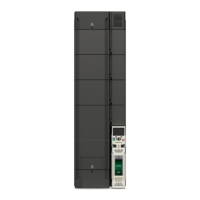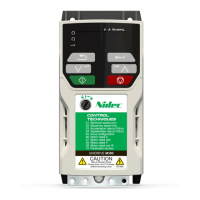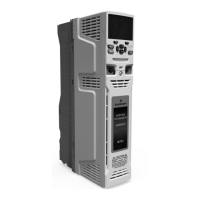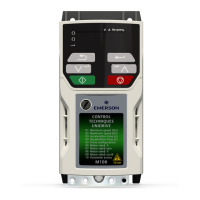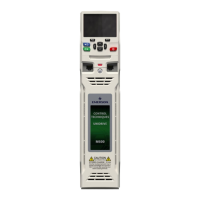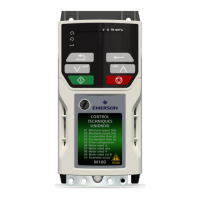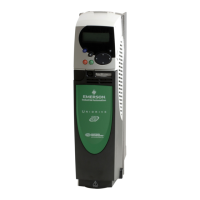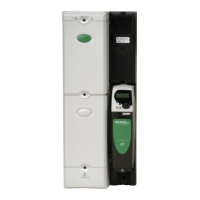model assuming SelectMotor2Parameters (11.045) = 0. If SelectMotor2Parameters (11.045) = 1 then M2MotorRatedCurrent (21.007)
and M2MotorThermalTimeConstant1 (21.016) are used instead.
Percentage Losses
The losses in the motor are calculated as a percentage value, so that under these conditions the MotorProtectionAccumulator (04.019) would
eventually reach 100%.
Percentage Losses = 100% x [Load Related Losses]
where
Load Related Losses = (I / (K
1
x I
Rated
))
2
where
I = CurrentMagnitude (04.001)
I
Rated
= MotorRatedCurrent (05.007)
The value of K
1
defines the continuous allowable motor overload as a proportion of the MotorRatedCurrent (05.007) before the
MotorProtectionAccumulator (04.019) reaches 100%. The value of K
1
can be used to model reduced cooling at low frequencies and to allow the motor
to operate under rated conditions with a small margin to prevent spurious trips. K
1
is defined in more detail later.
Motor Protection Accumulator
So far the steady state motor losses have been defined, but the motor model must estimate the temperature within the motor under dynamically
changing conditions, and so the MotorProtectionAccumulator (04.019) is given by the following equation.
T = Percentage Losses x (1 - e
-t/τ1
)]
where
T = MotorProtectionAccumulator (04.019)
τ1 = MotorThermalTimeConstant1 (04.015)
Reduced cooling with lower frequency
If LowFrequencyThermalProtectionMode (04.025) = 0 the characteristic is intended for a motor which can operate at rated current over the whole
frequency range. Induction motors with this type of characteristic normally have forced cooling. If LowFrequencyThermalProtectionMode (04.025) = 1
the characteristic is intended for motors where the cooling effect of motor fan reduces with reduced motor frequency below half of rated frequency. The
maximum value for K
1
is 1.05, so that above the knee of the characteristics the motor can operate continuously up to 105% of rated current.
If MotorRatedCurrent (05.007) > MaximumHeavyDutyRating (11.032) then K
1
is defined as shown below. Two different characteristics are provided,
but in both cases the motor performance is limited at lower frequencies and the permissible overload is reduced from 105% to 101%.
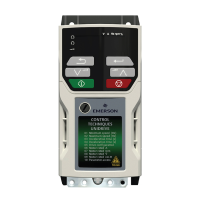
